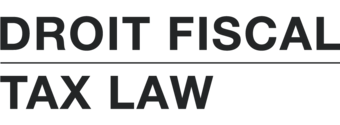
Photo by Olia Danilevich
The Canada Revenue Agency has updated its information circular dealing with the Voluntary Disclosures Program. Applications received on or after October 1, 2025 will be considered under the new guidelines. The new guidelines are welcome as they indicate the CRA’s continued commitment to the VDP. In fact, the CRA took a step back from the rigid requirement that a VDP application needs to be “voluntary”. Any applications before October 1, 2025 that were not considered voluntary were denied, leading to potentially harsh consequences for taxpayers who came forward, which in turn led to litigation. In order to address this problem, the new guidelines use a different approach and focus on “unprompted applications” versus “prompted applications”. In essence, an unprompted application is an application that was made by a taxpayer voluntarily without any events prompting the taxpayer to come forward. In contrast, a prompted application is an application made by a taxpayer after the taxpayer received a communication regarding an issue related to the disclosure. In other words, there was a trigger that prompted the taxpayer to come forward.
Instead of denying prompted applications, the CRA will provide reduced relief. Per the guidelines:
- “Unprompted applications are normally eligible for general relief and will receive 75% relief of the applicable interest and 100% relief of the applicable penalties.”
- “Prompted applications are normally eligible for partial relief and will receive 25% relief of the applicable interest and up to 100% relief of the applicable penalties.”
Note that for prompted applications, the interest relief is 25% of applicable interest versus 75% relief for unprompted applications. Regarding penalties, the relief is “up to” 100% of applicable penalties versus a clear 100% for unprompted applications. In addition, if the CRA determines that an application is eligible for relief (whether prompted or unprompted), there will be no criminal prosecution and the gross negligence penalty will not apply on the information disclosed.
In simple terms, there is a higher likelihood that a VDP application will be accepted under the new guidelines. However, the difference lies in how much relief will be granted.
Other Noticeable Changes
The new guidelines are shorter and seem to give more concrete and practical examples on how to submit a VDP application. There is less discussion of the “principles” of the VDP and more guidance on how to go about making a VDP application. This may be in order to make the process more efficient for the CRA and to address recurring issues that the CRA has been dealing with.
The new guidelines specify that supporting documentation for the six most recent years must be included. If the errors or omissions relate to assets located outside of Canada, documentation for the 10 most recent years must be included. This is the starting point, as the CRA may request more support as it reviews the application.
The distinction between “General Program” and “Limited Program” is no longer present. Under the old guidelines, applications accepted under the general program were eligible for more relief whereas applications accepted under the limited program, those that disclosed non-compliance involving an element of intentional conduct, were eligible for reduced relief. The difficulty with this distinction was that it involved an element of subjectivity. Further, it was a disincentive for some taxpayers to come forward, i.e. those that feared they would fall under the limited program.
There is no longer a reference to the 10-year limitation period, whereas the old guidelines stated:
“17. The Minister’s ability to grant penalty relief is limited to any penalty that could apply to any taxation year that ended within the previous 10 years before the calendar year in which the application is filed.
18. The Minister’s ability to grant interest relief is limited to the interest that accrued during the 10 previous calendar years before the calendar year in which the application is filed. This is the case regardless of the taxation year (or fiscal period) in which the tax debt arose. For more information, see Revised 10-year limitation period for interest relief.”
The language on objection rights is stricter. Under the old guidelines, a taxpayer whose application was accepted, whether under the general program or the limited program, could not file an objection to dispute the assessment of “penalties” and “interest”. However, there was more latitude for the taxpayer to object and appeal the specific matter disclosed, especially if the taxpayer’s application was accepted under the general program. In contrast, the new guidelines state:
“There is no right of objection for a decision made under the VDP as legislation does not give a person the right to dispute a discretionary decision about providing VDP relief. Under subsection 165(1.2), a taxpayer is prohibited from filing an objection to dispute the assessment of penalties and interest made under subsection 220(3.1).”
The new language seems categorical that there is no right of objection for a decision made under the VDP, plain and simple.
Conclusion
It is important to remember that the CRA has the discretionary power to accept or reject a VDP application. While the new guidelines seem to relax the rules for an application to be accepted, there is no guarantee. Each application will be considered on its own merits.
A VDP application needs to be prepared thoughtfully. Further, even after the application is submitted, one must be prepared to address any questions the CRA may have and provide any additional documents the CRA may request.
More information on the new guidelines can be found on the CRA’s website: Changes to the Voluntary Disclosures Program
